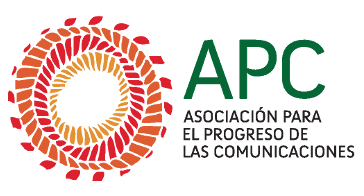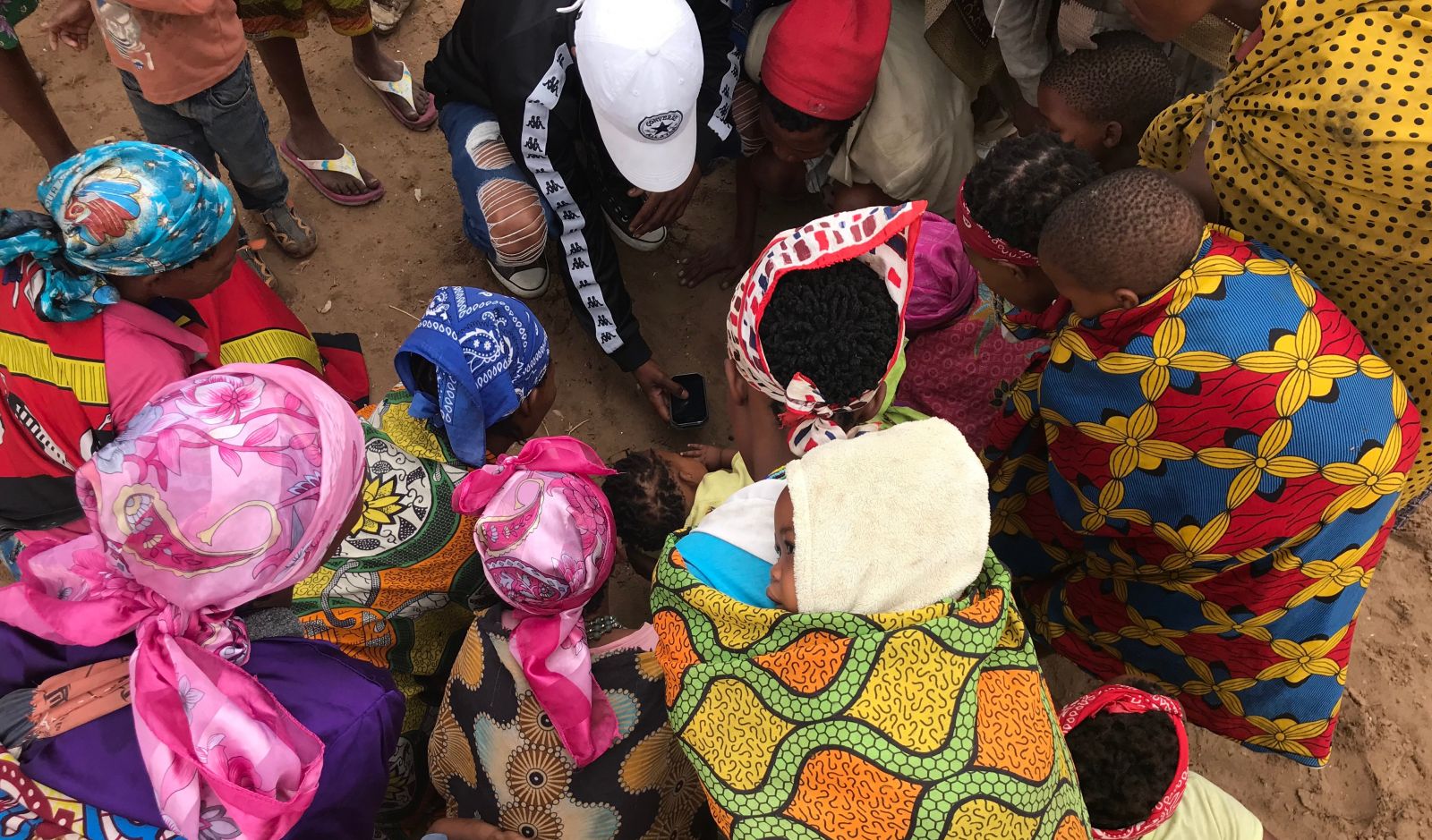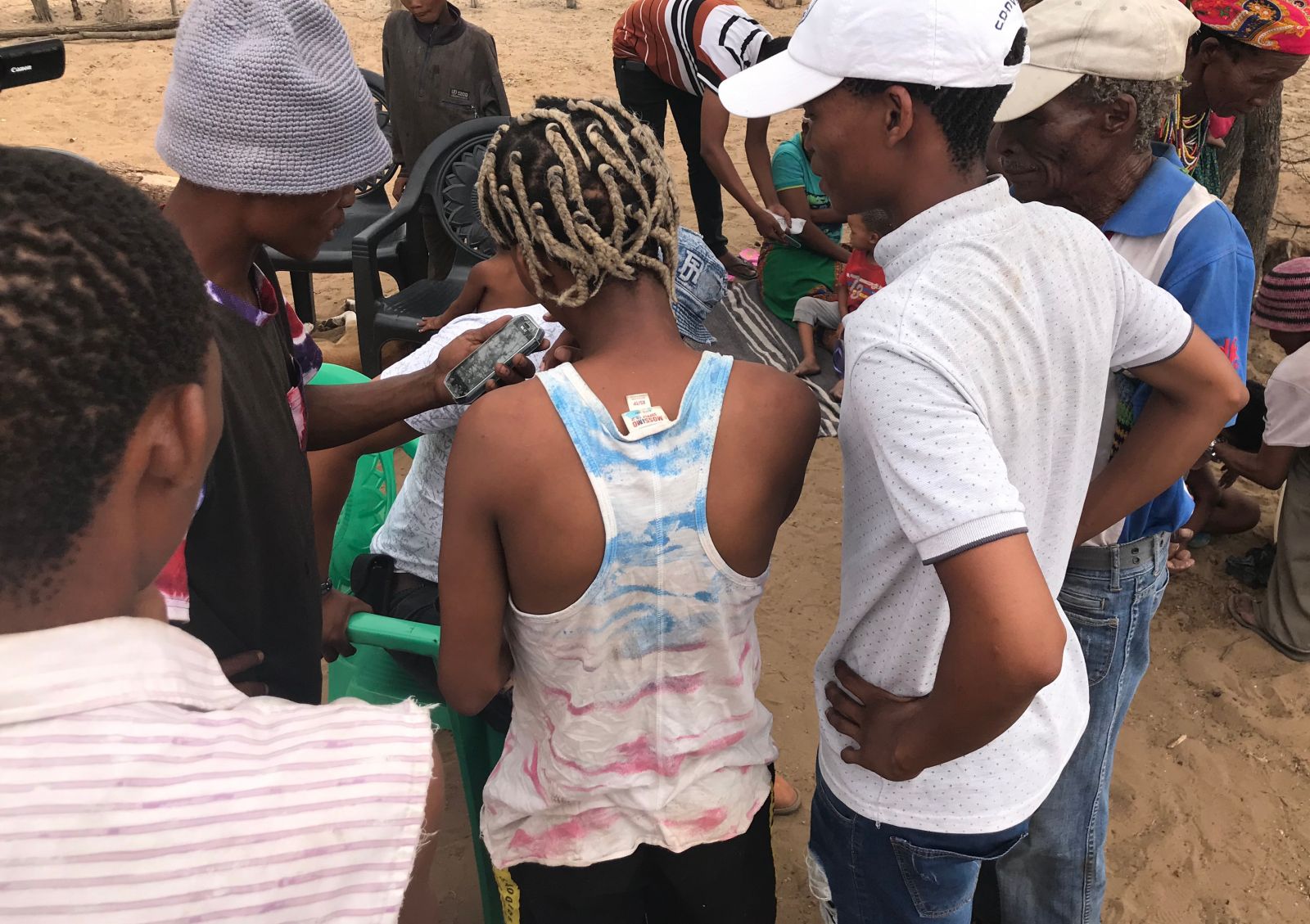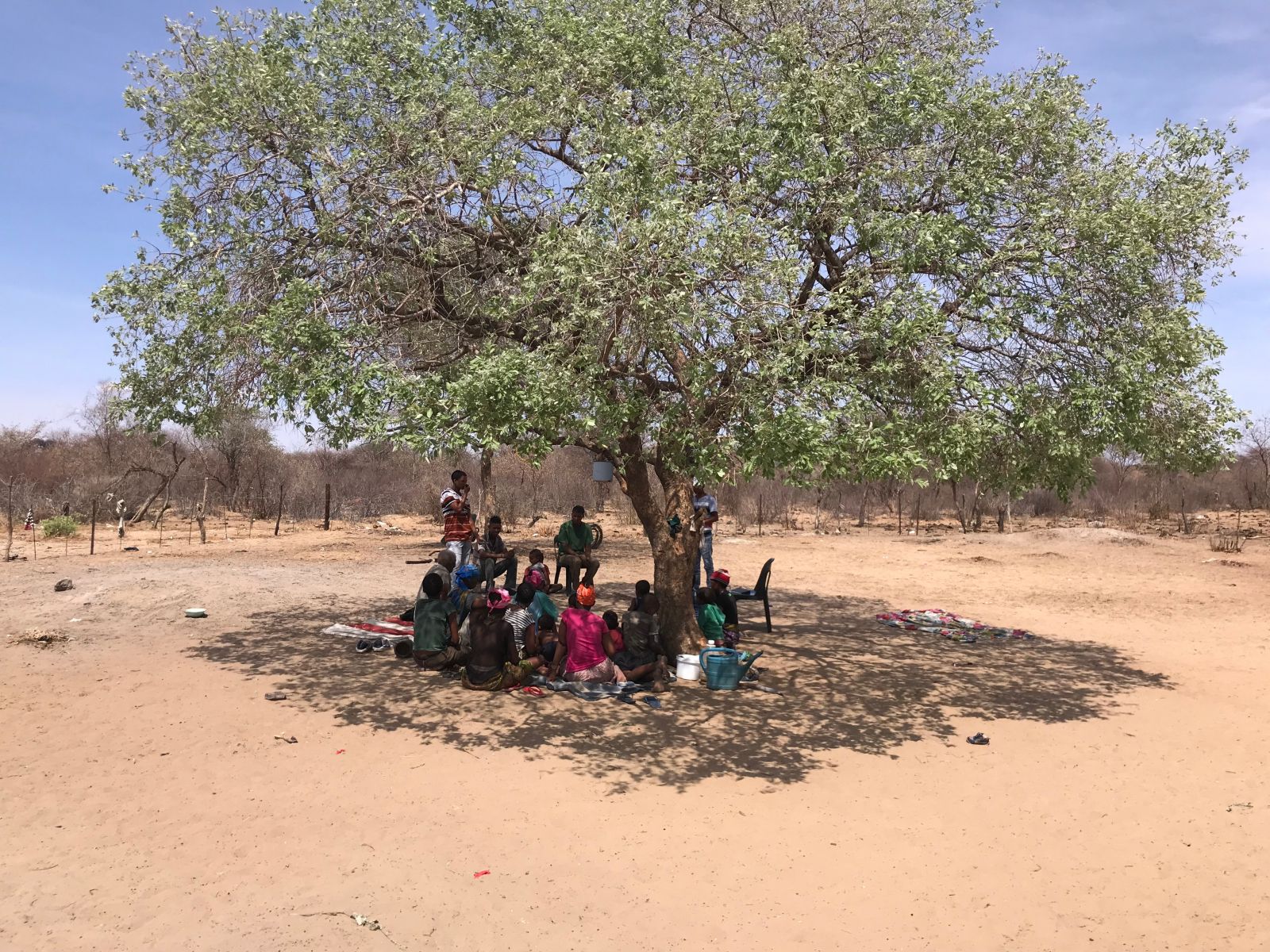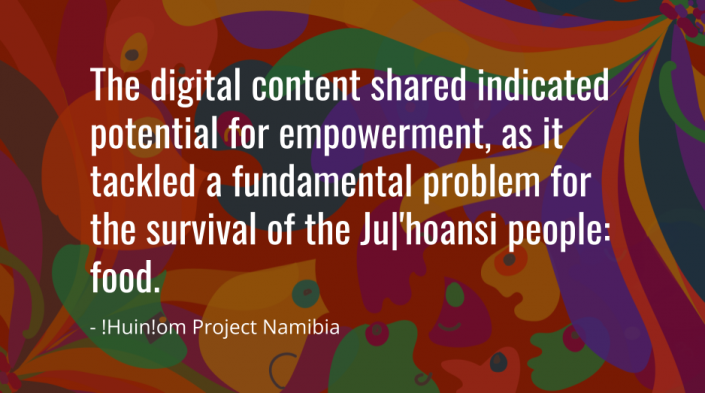
Publicado el
Actualizado por última vez en
How are APC partners improving their communities' lives? In this column we’re highlighting stories of impact and change by our partners, supported by APC subgranting. This catalytic project built a digital community network for the Ju|’hoan people living in the remote Nyae Nyae Conservancy in Namibia.
The Nyae Nyae Conservancy was one of the first wildlife conservation organisations registered in Namibia in an area considered important in southern Africa. Of Nyae Nyae Conservancy’s Ju|’hoan population of 3,000, over half live off-road and off-grid in 38 settlements of 20 to 60 people, scattered across a vast area.
Here, an international team from Namibia’s International University of Management, Brazil, Aotearoa (Māori name for New Zealand) and the UK partnered with the Ju|’hoan people living in the remote Nyae Nyae Conservancy to build a digital community network. They designed, implemented and trialled novel prototypes of an offline oral social network and a low-cost, robust, portable, solar-charging setup.
The team involved worked together with the community to co-design an offline social network that allowed the Ju|'hoansi people to exchange audio recordings, including ones about gardening challenges and practices to produce their food. Beyond overcoming the many access challenges faced in the region, their experience highlighted the value of technologies co-designed in a community-oriented approach and the importance of local content sharing.
Seeding a community network with an offline social network
The idea of seeding a community network with an offline social network came from a previous experience with Zenzeleni Networks in South Africa, where researcher Nic Bidwell, one of the project’s implementers, explored the use of voice recordings in rural Africa.
Building on previous experiences, a team with different backgrounds and from multiple countries worked together with the community to design technology that could meet people’s interests and needs, taking into account the local reality and way of living. Therefore, the project comprised multiple activities, aimed at exchanging knowledge with the Ju|’hoansi people and enabling them to drive and actively participate in co-designing and implementing asynchronous audio content production, and sharing in ways that are acutely sensitive to their cultural values.
A peer-to-peer (P2P) offline social network, based on the decentralised and secure Scuttlebutt platform, was designed in conversations with inhabitants of the 40 villages scattered across the Conservancy. The discussions with the Ju|'hoansi groups also helped to identify the equipment requirements, which included phones, solar panels, USB speakers, power banks and a bucket holder. At times weather or roaming elephants made it difficult to walk the long distances between villages. However, the offline social network offers great potential as a low-cost digital approach to swapping stories, similar to sitting around a campfire, in inter-village communication. Furthermore, with a few villages now within coverage of the new mobile tower in Tsumkwe, there are more opportunities for integrating an intermittently online component to the system.
Among the audio stories shared, the project team identified an unexpected and exciting outcome: they learned that recorded content might have a positive impact on Ju|'hoansi people’s thoughts about food.
Local content and food security
The noresi (villages) that the Ju|'hoansi people have settled are based around bore holes located in this arid sector of the Kalahari Desert. When project team members Martin Ujakpa, Candi Miller and Nic Bidwell engaged with the Ju|'hoansi villagers to understand their needs in August 2019, they explained that the Nyae Nyae Conservancy is responsible for maintaining and fixing bore holes. At the time, Namibia was in a state of emergency with its worst drought in a century, which affected the health of all living beings. This was combined with particular problems for the Ju|'hoansi, who could no longer hunt as they would have done in the past.
In previous years several programmes helped villages establish small gardens around the bore holes to improve food security. “During our initial field visits, we saw some gardens doing very well, as they were growing spinach, peppers, potatoes, pumpkin and melon,” the people explained. “We also learned about the grievances, including the trampling of the gardens by cattle. We were shown the sad state of some gardens yet we also also noticed that people in villages with more verdant gardens appeared to be in stronger health.”
As part of the project, the team planned an evaluation to discuss the relationship between the recorded content distribution system and the Conservancy’s field visits to maintain the bore hole. The results were both revealing and promising: “We did not expect to learn that recorded content itself might have a positive impact on Ju|'hoansi people’s thoughts about food,” they pointed out. Indeed, the team found that of the two villages that recorded and transferred recorded messages, their digital recorded content was usually about their gardens.
Encouragingly, some Ju|'hoansi villagers said that it was new and good hearing about how other villages practiced their gardening. "What is perhaps most uplifting about the impact of this project is that the digital content that was shared indicated a sense of the potential for empowerment in tackling a fundamental problem for the survival of the Ju|'hoansi people: food,” expressed the team, in celebration of the project’s positive impact on local communities.
Photos: Courtesy of Nic Bidwell
This piece is a version of information highlighted by the project team in their report and story around the !Huin!om Project Namibia, as part of the project "Connecting the Unconnected: Supporting community networks and other community-based connectivity initiatives", adapted for the Seeding Change column, which presents the experiences of APC members and partners who were recipients of subgrants offered through APC projects. Beyond the support from the APC's catalytic interventions grants , APC Labs provided additional financial and technical support for the selection of the equipment and the development of audio component of the P2P application.
Did this story inspire you to plant seeds of change in your community? Share your story with us at communications@apc.org.
